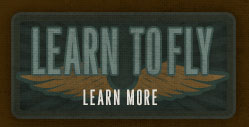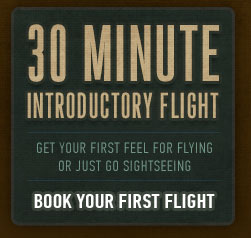- CELEBRATING
- 23 Years
- IN BUSINESS
- Call Us Today
- +1.604.534.6855
Getting Started
Congratulations on taking the first steps in becoming a pilot -- Seeking information on the process.
In the good old days this process would typically start by visiting your local airport and hanging on the fence watching planes take off and land, or maybe a family friend or uncle would take you for a flight a give you a try at the controls. Nowadays this process more often starts here on the web, browsing websites and collecting pages o f information. In the spirit of embracing both eras we invite you to read the information presented here and then come and join us at the fence, as nothing inspires, excites, and thrills the little boys and girls as watching an airplane climb away into that beautiful blue sky.
f information. In the spirit of embracing both eras we invite you to read the information presented here and then come and join us at the fence, as nothing inspires, excites, and thrills the little boys and girls as watching an airplane climb away into that beautiful blue sky.
Licence Types
In Canada (as with many other countries) there are a few different licenses available to choose from, the most popular being the Private Pilot Licence (PPL). A more restrictive option is the Recreational Pilot Permit and for those with professional aspirations the Commercial Pilot Licence is what you will need.
The PPL licence allows you to command a Canadian registered aircraft during the daytime in visual flight conditions. You can also add additional endorsements onto your PPL licence permitting flight at night, without visual references, and to fly floatplanes and multi-engine aircraft.
Basic Requirements
The basic requirement is to complete a minimum of 40 hours of ground instruction which is (commonly referred to as ground school) and in the case of the PPL licence 45 hours of flight instruction. Successfully complete a Transport Canada Written Examination and a Flight Test and you have yourself a Pilot Licence.
Ground school is typically taught in a classroom setting, often two nights a week in the evenings for 2 hour sessions, although at certain times in a year we will run an accelerated program that runs 5 days a week for 4 hour sessions. It is also acceptable to participate in online ground school courses. There are 10 major topics of focus in the curriculum; these are Licensing, Airframes and Engines, Navigation, Weather, Regulations, Pilot Decision Making, Human Factors, Radio Navigation, Theory of Flight, Flight Operations, and Flight Instruments.
Air Instruction or Air Exercises have a minimum requirement of 45 hours as in the case of a PPL licence. This amount differs with the other licenses. This minimum amount is divided into dual training and solo practice. During this time you will learn the fundamentals of flying an airplane, as well as take offs landings, navigation and emergency procedures. As this is skill based training the amount of time required to complete this training will differ with each individual.
Medical Certificates
It should be mentioned that you will also be required to undergo a Medical Examination. There are in fact four different categories of medical certificates depending on which pilot's licence you are seeking. The two relevant categories are Category 1 for a Commercial Pilot Licence and Category 3 for a Private Pilot Licence.
four different categories of medical certificates depending on which pilot's licence you are seeking. The two relevant categories are Category 1 for a Commercial Pilot Licence and Category 3 for a Private Pilot Licence.
Course Duration
Our training programs are designed to be flexible to meet the needs of both full time and part time students. A typical student training to become a private pilot can complete the course in 6 weeks if they apply themselves full time to the program. If you are doing this more recreationally, training after work or school and weekends you can expect to take approximately 10 to 12 months to obtain your licence. As can be expected, the more frequent you train the sooner you will complete.
Course Costs
Each program has different training requirements and therefore different costs. With respect to the private pilot licence, you can expect to pay approximately $9500.00. This might seem expensive to some, but you should note that a majority of this cost is associated with flying of the aircraft and not in fees, taxes, and tuition. Which means most of your money will be going towards what you want to be doing in the first place...flying.
There is also no need to come up with all the finances prior to starting your training. A majority of the fees and costs are pay as you go. You pay for each lesson following that lesson.
You might find answers to some other questions that you have in our FAQ page, please have a look there or feel free to email us for more specific answers.



